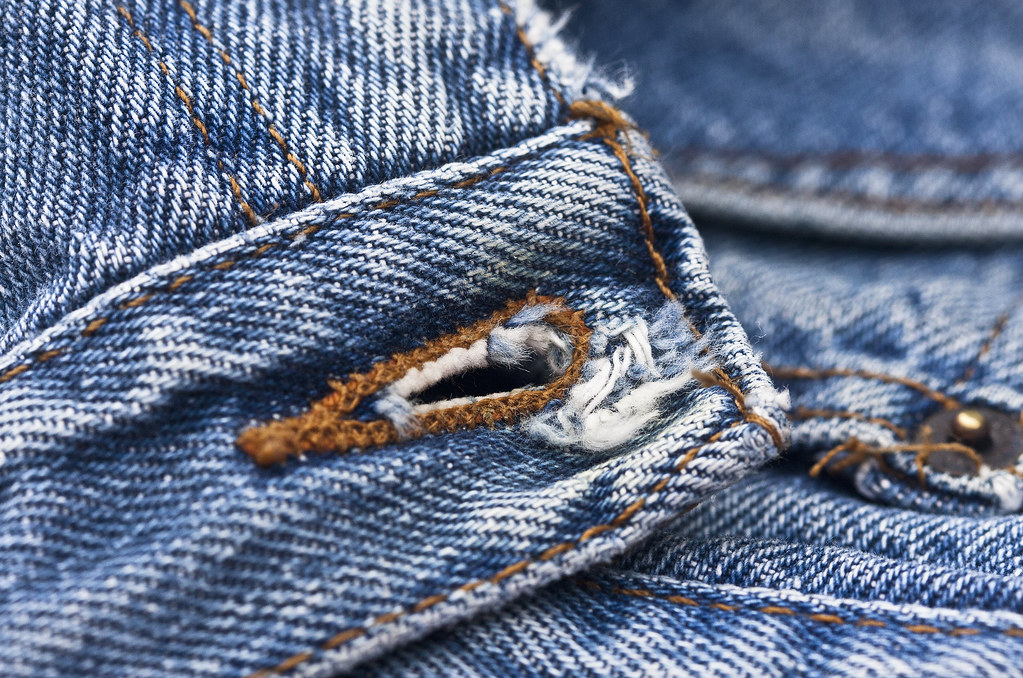11 warning signals when buying clothes
Sleeves shrink, shapes of clothing get warped, seams disintegrate — even with the first wash, items of clothing will show you if they are capable of standing the test of time.
At the point of purchase, it's important to pay attention to certain warning signals — beyond how much an item costs. Needless to say, if your child's T-shirt is ridiculously cheap, it's likely not going to be the best quality or manufactured to the highest standards.
So, when it comes to clothes shopping, here are 11 points to keep in mind:
1. Glue residue
Shoes have to endure a great deal of wear and tear, which is why the manufacturing process so important. One immediate sigh of poor manufacturing, for example, is when visible glue residue can be seen around the outer sole of the shoe.
If the sole and individual parts of the shoe have been sewn, check to see if the threads have been stitched well and run evenly and tightly together. To check the workmanship, gently pull the upper part of the shoe away from the edge of the outer sole; if the stitching starts to come undone or rips apart easily, then this is definitely not a well-constructed pair of shoes. Holes will almost inevitably appear before long.
The outer sole should be sturdy, while the inner sole should be nice and soft — press on the inner sole with your thumb and make sure that the edges are smooth and the surface feels even and fits the shoe perfectly. Small details like this, if overlooked, can become torture after wearing the shoes for even a little while.
2. Loose seams
Whether shopping for bras, blouses or skirts, you should always take a close look at the seams while you're in the store and definitely before you buy anything. The stitches should be uniform and as close and tight together as possible. Make sure all seams on the fabric lie completely flat without puckering. This applies to both inside and outside! A sewing machine works with a top thread and a bobbin thread. If the threads are adjusted incorrectly, the seam only seems superficially neat and tidy. Give it a little tug — if it separates, it was poorly made. In addition, if the seam is in any way crooked or messy — if there are stray threads, loose stitches or areas that have been stitched over several times — then these are all warning signs and you shouldn't buy this item.
3. Wrong types of seams
You are looking for neat, secure, reinforced seams, instead of a few flimsy stitches that will literally dissolve in the first spin cycle of your washing machine. A seam that has a distinct zig-zag pattern is one of the fastest, cheapest ways to seam a garment, which is completely fine for finishing edges on things like T-shirts or lightweight tops, but they are no good for connecting two pieces of fabric. Load-bearing seams are the ones that can deal with this kind of constant tension and they require two rows of stitches close to each other. Hems should be folded under and sewn together and appear symmetrical on both sides.
4. Patterns that don't line up
Just like with wallpaper, patterns on clothes should always seamlessly line up. High-quality brands will make sure a patterned garment looks like it is made out of one piece of fabric, whereas low-quality brands will usually skip this extra step just to save costs.
5. Strange fabric
When you fold something like a sweater, you'll immediately notice whether the left side matches the right. If it does, then you're holding a well-manufactured piece of clothing. If not, then the fabric was most likely already crooked when it was cut. When fabric is cut properly it should be cut on a 45 degree angle to the straight grain, so that it drapes nicely, fitting the shape of the body.
6. Thin fabric
A summer dress should be light and a silk blouse should feel like a breath of fresh air when it sits on your shoulders. However, a lightweight fabric does not necessarily have to be a thin kind of fabric. Because the denser the fabric, the more robust it is, and ultimately the softer it feels on the skin. Hold the garment up to the light. If the fabric appears irregular, threadbare or brittle, this is a clear sign of low quality.
7. Wrinkled viscose
Artificial silk is quite cheap and still offers a comfortable fit. However, there are great differences in the quality of the material. When you're in the store, firmly scrunch up the fabric in your hands. If wrinkles remain behind, this is an indicator of inferior goods.
8. Open zippers
Occasionally, an exposed zipper can act as a fashionable feature, but usually hidden fasteners are are an indication of proper tailoring. In addition, exposed zippers may damage other garments that come in contact with them. Generally, with zippers, the rows of teeth on the left and right must be the same length. Make sure it moves smoothly and lies flat against your body, without puckering. The zipper should also remain at the top and not slide down if you pull on the sides slightly.
9. Limp collars
For shirts, blouses and pants you should check whether additional fabric was incorporated in the waistband and collar. This gives stability and ensures that the shape does not warp after being washed for the umpteenth time.
10. Frayed buttonholes
A firm seam is essential for buttonholes in order to avoid fraying. Buttonholes should be reinforced by very densely stitched thread and you shouldn't be able to see any raw edges of the fabric through the stitching.
11. Missing seams at the back
Your upper torso is not just a straight-edged block and the tailoring process for well-made jackets takes this into account. Decent clothes should consist of several pieces of fabric sewn seamlessly together at the back to avoid the fabric folding or wrinkling. You'll find though, that several manufacturers do without this important measure and as a result, clothes don't fit that well.
Take a look at your own closet and you'll quickly develop a good sense of which items have stood the test of time and which haven't. The warning signs listed above offer you an additional method for recognizing the quality of goods in stores. Online shopping is more of a challenge, but items can always be returned if they don't meet your requirements. Quality checks are worth the while and will save you a lot of money in the long run.



